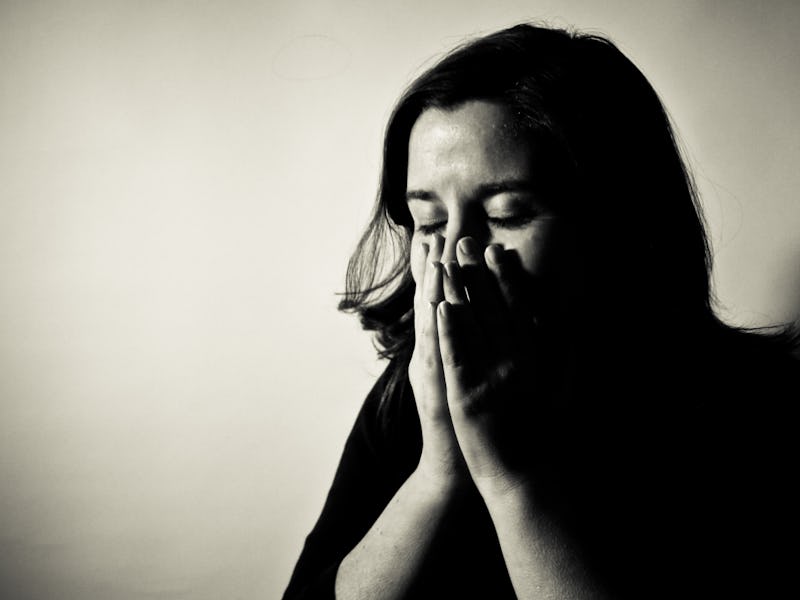Depression Treatment Offers a 'Personalized Way of Treating People'
It's difficult enough for people to seek treatment for depression -- once they are there, they need to know it will work.

Depression is the most common illness among us — it affects an estimated 350 million people worldwide. Within this complex disease lies many conundrums but perhaps few as frustrating as the rates concerning treatment: About 50 percent of people who are depressed never seek help from medical professionals. We also know that meaningful improvement only happens for about half of those treated.
A new model hopes to put practitioners and patients on the path to fixing that. A collaboration between Michigan State University and the Massachusetts Institute of Technology, the model captures the various interactions between depression and other aspects of life — from physical health to social relationships and personal economics. Because the factors that drive depression often overlap, the model incorporates system dynamics to create a loop diagram:
This comprehensive model includes the major drivers of depression and could lead to more precise treatment.
“This model essentially shows us the comprehensive way that depressive symptoms work,” says study co-author Andrea Wittenborn, an associate professor of human development and family studies at Michigan State University, to Inverse. “This is the first in a series of studies that will allow for a more precise treatment of depression, and a more personalized way of treating people.”
Most research and treatment focuses on a narrow slice of depression, but Wittenborn and her team knew that because depression is caused by many factors, they needed a broader way of looking at the issue.
When accurately identified, forms of depression can be highly treatable. But since varying social, environmental, and biological elements all drive depression, accurate diagnosis is often hard to accomplish.
“We have some good treatments, but we’ve been stuck for a while in terms of effectiveness,” says Wittenborn. “The first kind of treatment people receive isn’t always ideal because right now many practitioners are working more on a trial-and-error basis.”
“We can usually treat about half of the people who have depression with our current treatments — we need to do better.”
System dynamics provides a set of guidelines for this model, study co-author Hazhir Rahmandad of MIT tells Inverse. The interactions between the different drivers of depression are based on about 600 different academic articles, analyzed by the model’s creators over the course of several years.
It’s a dynamic model — the arrows are flows of movement; the rectangles are areas of accumulation. A situation paired with an “R” is a reinforcing feedback loop. A patient with depression can identify what loops their symptoms match up with, which can demonstrate what the repercussions of those symptoms are.
Wittenborn hopes that this approach can lead to a more simplified means of getting this information to practitioners, who can recommend more accurate treatments.
Wittenborn and Rahmandad hope their model could eventually be used to create a sort of smartphone app in which patients could plug in their depression triggers and receive a recommendation for the most appropriate treatment. But this application is still a ways off:
“The app would be an exciting application of the research, though for it to be beneficial it should be based on a well-validated quantitative model, and we are far from having the scientific knowledge to create that app with the standards called for in practicing medicine,” says Rahmandad.
If an app like this did exist, there are signs it would be successful. A 2013 poll revealed that 52 percent of smartphone owners have used their phone to look up health or medical information, while 72 percent of internet users say they have looked online for health information. The anonymous aspect of an app could be compelling to depressed users who have yet to go to a practitioner to seek treatment.
In the meantime, Wittenborn hopes that her model will help depressed people get the personalized treatment that they need. Because the variables that cause depression can change rapidly, it’s essential to get the form of treatment right the first time around.
“People with depression are often struggling with a lot of worthlessness and hopelessness that keeps them from engaging in treatment,” says Wittenborn. “We need to know how to exactly target their symptoms and give them the help they need.”